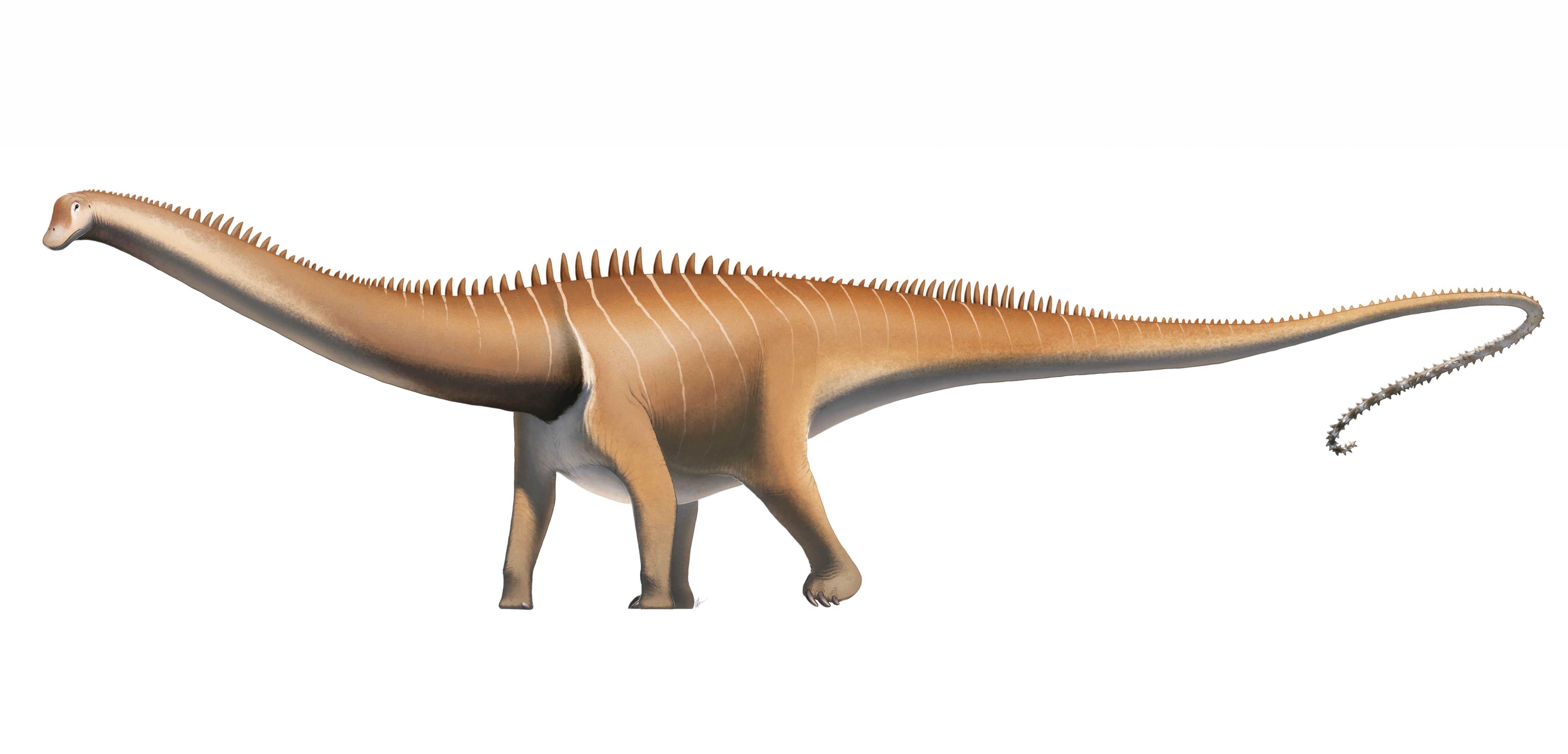
Diplodocus was a long-necked giant. He grew up to 27 meters long. His neck alone measured 8 meters, his whip-shaped tail grew up to 14 meters long. Only his head was puny in relation to his body. It became just 60 cm long.
He had forward pointing teeth. These were peg-like and clustered at the front of his mouth.
| Profile | Diplodocus |
|---|---|
| Prehistoric Era | Upper Jurassic 157.3 to 145 million years ago |
| Order | Saurischia |
| Suborder | Sauropodomorpha |
| Family | Sauropoda |
| Tribe | Diplodocidae |
| Genus | Diplodocus |
| Species | D. longus, D. carnegii, D. hayi, D. hallorum |
| Height | 5 meter |
| Length | 27 meter |
| Weight | 13 - 15 tons |
| Territory | Alberta (Canada), Utah and New Mexico (USA) |
In 2004, the journal "Organisms Diversity & Evolution" published a study showing that Diplodocus, like other sauropods, probably grew very quickly. It probably increased in size throughout its life. The researchers assume that he reached sexual maturity at the age of 10 years.
Currently, 4 species of Diplodocus are recognized:
Named after businessman and philanthropist Andrew Carnegie, Diplodocus carnegii is one of the longest dinosaurs ever found with its long, flexible neck and tail.

In pictorial representations, the long-necked dinosaur is often depicted with its neck raised high. It was assumed that he got his food mainly from treetops.
However, this swan-like neck posture is doubted by some scientists.
Two researchers from Northern Illinois University and the University of Oregon, J. Michael Parrish and Kent Stevens, examined the skeletons of Diplodocus and Apatosaurus.
They created computer models of Diplodocus' cervical spine and examined different neck positions.
They found that Diplodocus could hardly have raised its head above the level of its back. Likewise, an S-shaped neck posture would not have been possible due to the anatomy of his cervical vertebrae. They concluded that Diplodocus could only hold its head one to one and a half meters above the ground in a relaxed neck posture.
Another problem that the researchers point out is the blood supply to the brain when the head is in a swan-necked position. The heart would have had to be huge to pump blood to the brain, which would have been more than ten meters above his body in this position.

If Diplodocus held its neck at a 45° angle most of the time, it can be inferred that it fed mainly on ferns and other low vegetation. This food was most likely also more nutritious than the canopy vegetation (pine needles) at that time.
This posture now suggests that his center of mass was very far back. From this it can be concluded that Diplodocus could not run very fast. However, the rearward center of mass would have allowed him to stand on his hind legs.
Thus, due to its sheer size, it could reach the top of tall trees without difficulty to graze leaves.
Diplodocus' nostrils sat high up on its forehead rather than at the end of its snout. Because of this, some scientists suspected that Diplodocus may have had a proboscis. However, a 2006 study published in the journal Geobios concluded that Diplodocus did not have the necessary brain anatomy.
According to a 2013 study, Diplodocus had a short tooth replacement rate per tooth of only 35 days. This tooth replacement rate suggests that this dinosaur ate abrasive food, such as plants covered with sand or gravel from the ground, or ingested plant parts that contained silica.
Image source : Fred Wierum, CC BY-SA 4.0 https://creativecommons.org/licenses/by-sa/4.0, via Wikimedia Commons
Debivort at en.wikipedia, CC BY-SA 3.0 http://creativecommons.org/licenses/by-sa/3.0/, via Wikimedia Commons
Jakub Hałun & Taxiarchos228, CC BY-SA 3.0 http://creativecommons.org/licenses/by-sa/3.0/, via Wikimedia Commons